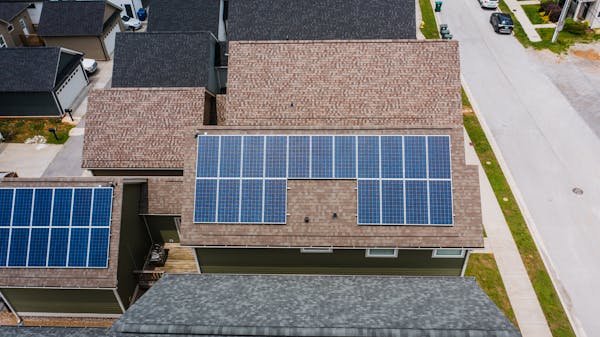Are you considering switching to solar energy but wondering, “What do solar panels for house cost?” You’re not alone! Many homeowners are interested in cutting their energy bills and contributing to a cleaner planet but are unsure about the financial side of things. This blog post will walk you through the cost of installing solar panels for your home, the factors that affect that cost, and how you can make the most out of your solar investment.
Introduction
With rising energy prices and the growing awareness of environmental sustainability, solar panels are becoming an increasingly popular choice for homeowners. But before making the leap, the one question on most minds is, “How much do solar panels for a house cost?” Understanding the cost factors, installation process, and potential savings can help you make an informed decision. In this post, we’ll break down the costs in simple, easy-to-understand terms, so you can see whether going solar is right for you.
Factors Affecting Solar Panel Costs
The cost of solar panels for your house can vary significantly based on several key factors. Here’s what influences the final price tag:
1. System Size
The size of the solar panel system you need will depend on your household’s energy consumption. A larger home with higher energy demands will require more panels, which increases the cost. On average, a typical home requires a 5 to 6 kW system, which can cost anywhere from $12,000 to $15,000 before any incentives or rebates.
2. Location
Your geographic location can greatly influence the cost of solar panels. Sunny states like California or Arizona will typically see better performance from solar panels, making the installation more cost-effective. Additionally, state and local incentives can reduce costs in some areas.
3. Type of Solar Panels
There are three main types of solar panels: monocrystalline, polycrystalline, and thin-film. Monocrystalline panels are the most efficient but also the most expensive. Polycrystalline panels are more affordable but slightly less efficient. Thin-film panels are the cheapest but generally less efficient, requiring more space.
4. Installation Costs
Solar panel installation is not a DIY project. You’ll need professional installers, and their labor costs can vary. On average, installation fees range between $2,000 and $5,000, depending on the complexity of your roof and the system size.
5. Incentives and Rebates
Federal, state, and local incentives can reduce the overall cost of your solar panels. The federal government offers a 30% tax credit for solar energy systems, and some states have additional rebates that can lower costs even further.
Average Cost of Solar Panels for a House
Now that we’ve covered the factors that affect pricing, let’s get into some numbers. On average, the cost of solar panels for a house ranges between $10,000 and $25,000. Here’s a breakdown:
- A small solar panel system (3 kW) might cost around $9,000 to $12,000 before incentives.
- A medium-sized system (5 kW) could cost between $12,000 to $15,000.
- A larger system (8 kW) might cost anywhere from $18,000 to $25,000.
Remember, these are just ballpark figures. The actual price will depend on your energy needs, location, and the type of solar panels you choose.
Long-Term Savings from Solar Panels
While the upfront costs may seem high, the long-term savings are where solar panels really shine. Once installed, solar panels can drastically reduce, if not eliminate, your monthly electricity bills. The average homeowner saves around $1,500 per year on energy costs, meaning the system can pay for itself within 6 to 10 years.
Beyond just cost savings, using solar power also increases the value of your home. According to recent studies, homes with solar panels sell for up to 4% more than those without.
Financing Options for Solar Panels
Worried about the initial cost? There are several financing options available to help make solar energy more accessible:
- Solar Loans: You can take out a loan to pay for your solar system upfront, then pay it back in monthly installments.
- Solar Leases and Power Purchase Agreements (PPAs): With this option, you don’t own the solar panels but instead pay a monthly fee to use the electricity they produce.
- Energy Efficient Mortgages (EEMs): Some homeowners opt to finance solar panels as part of their home mortgage through an EEM, which allows for lower interest rates.
Conclusion
Switching to solar energy is a significant investment, but the long-term financial and environmental benefits make it worthwhile. With costs for a typical solar panel system ranging from $10,000 to $25,000, and plenty of incentives to help reduce that number, going solar is more accessible than ever.
Before committing, consider factors such as your home’s energy needs, location, and available financing options. Whether you’re looking to lower your energy bills, reduce your carbon footprint, or increase your home’s value, installing solar panels can be a game-changer.
FAQs
1. How much do solar panels for a house cost?
On average, a solar panel system for a home costs between $10,000 and $25,000 before rebates and incentives.
2. How long do solar panels last?
Most solar panels come with a warranty of 25 years, but they can last even longer, continuing to produce electricity at reduced efficiency for 30 years or more.
3. How much can I save on my energy bills with solar panels?
Homeowners typically save around $1,500 per year on electricity costs, depending on their energy usage and the size of the solar system.
4. Are there any incentives for installing solar panels?
Yes! The federal government offers a 30% tax credit, and many states and local municipalities offer additional incentives or rebates.
5. Do solar panels increase home value?
Yes, homes with solar panels generally sell for up to 4% more than homes without them.
By considering these factors, you can make an informed decision about whether solar panels are the right choice for your home and budget. Happy solar shopping!
